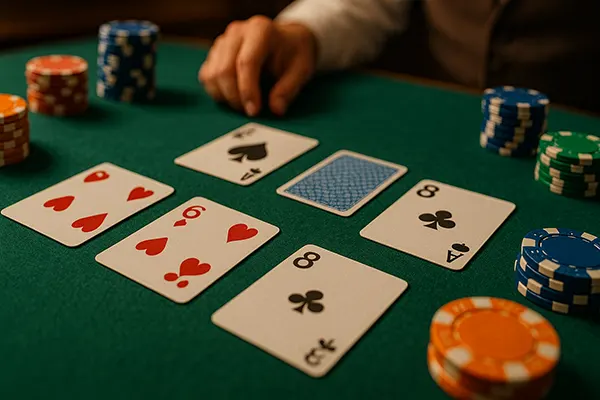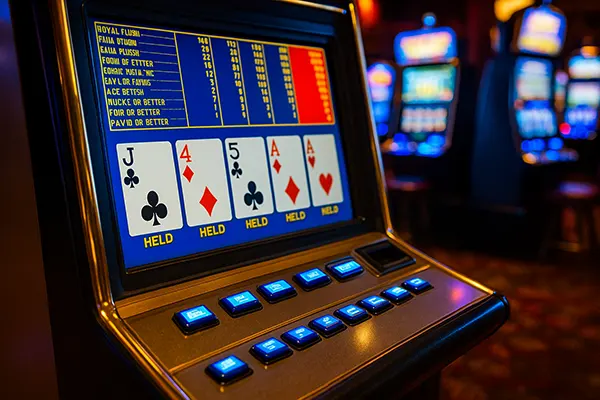
Psychology of Winning and Losing Streaks in Blackjack: How to Avoid Tilt
Blackjack is not merely a game of cards, numbers, and strategy. It is also a deeply psychological experience. For many players, the emotional rollercoaster of consecutive wins or losses can lead to irrational decisions, altered perceptions of risk, and a state known as “tilt” — a loss of emotional control that often ends in poor gameplay. Understanding how these patterns influence the mind is the first step to gaining mastery over them and maintaining control at the blackjack table.
How Losing Streaks Influence Rational Decision-Making
A sequence of losses in blackjack can trigger a cognitive distortion known as the gambler’s fallacy — the belief that a win is “due” after a run of losses. This mindset distorts probability and prompts players to chase their losses with larger bets or riskier decisions. Instead of sticking to strategy, players may deviate, believing emotionally that they can “turn things around.”
Neuroscientific research shows that losing streaks activate the brain’s stress response system, increasing cortisol levels and reducing executive function — the part of the brain responsible for logical decision-making. In this state, players become more impulsive, less focused on strategy, and more likely to make mistakes.
Further compounding the problem is the emotional discomfort associated with loss. Players often engage in what psychologists call “loss aversion,” giving disproportionate weight to losses compared to equivalent gains. This can cause them to take irrational risks in an effort to avoid further disappointment.
The Role of Cognitive Biases in Tilt
When on tilt, players frequently exhibit confirmation bias, seeking patterns in randomness and interpreting neutral outcomes as wins or losses depending on their emotional state. They might also show outcome bias, justifying bad decisions because they coincidentally led to a win once or twice in the past.
This emotional fog diminishes the ability to calculate odds effectively or adhere to proven strategies like basic blackjack rules. Instead, decisions are driven by frustration, revenge, or desperation — none of which belong at a professional card table.
Understanding these psychological traps is essential to recognising the early signs of tilt. Awareness is the first step towards implementing strategies that can interrupt the cycle before it derails gameplay entirely.
Techniques for Emotional Control and Pausing the Game
Recognising the signs of tilt is critical, but acting on them is even more important. One of the most effective strategies is the deliberate use of “timeouts” — structured pauses from play designed to recalibrate emotional balance and re-engage rational thought processes. Taking a short break, even for a few minutes, can significantly reduce emotional tension and restore clarity.
Deep breathing exercises, mindfulness, and grounding techniques have been shown to lower physiological stress markers and help players remain centred. These tools support the transition from reactive to reflective thinking, allowing players to make more calculated decisions based on logic rather than emotion.
Another valuable method is setting strict session limits, both in terms of time and money. When limits are predefined and adhered to, players are less likely to engage in impulsive behaviour. This structure acts as a psychological boundary that reinforces discipline and self-regulation.
Creating a Blackjack Routine with Built-In Pauses
Designing a personalised play routine that includes scheduled breaks, reflection points, and self-checks can serve as a strong defence against tilt. Before each session, players should state their goal, strategy, and exit plan — and review them after each break.
Pauses should not be seen as a weakness but as part of a robust mental game plan. Just as professional athletes build rest into their training, smart blackjack players schedule resets to optimise performance.
This routine can include stepping away from the table, drinking water, stretching, or briefly engaging in an unrelated activity. The aim is to disrupt the emotional momentum that losing streaks can generate, returning the player to a baseline state of calm and focus.

Using Cognitive Behavioural Therapy (CBT) Techniques for Self-Control
Cognitive Behavioural Therapy offers tools that can be adapted by players to build mental resilience. A central tenet of CBT is recognising automatic negative thoughts and reframing them. For example, replacing “I always lose” with “Variance is a natural part of the game” can neutralise emotional spirals triggered by losses.
Journaling after sessions — noting decisions, emotions, and outcomes — helps players identify patterns in thought and behaviour. This reflective practice supports long-term learning and emotional intelligence, which are vital for sustainable success in blackjack.
CBT also encourages the use of “coping cards” — small reminders players keep with them at the table, featuring rational affirmations and strategies for refocusing attention. These tools help anchor players in logic, even when emotion threatens to override it.
Daily CBT-Based Mental Exercises
Simple, daily CBT-based exercises can dramatically improve emotional regulation. One method is the “thought log,” where players record their emotional reactions and cognitive distortions after each gaming session and reframe them with evidence-based thoughts.
Another technique is visualisation. Before play, visualising the correct response to tilt situations — such as calmly walking away after a third consecutive loss — conditions the brain to default to positive responses under pressure.
Finally, structured self-talk, such as repeating “Stick to the strategy, not the streak,” reinforces disciplined behaviour and gradually builds resilience against emotional swings.
The most popular articles
-
 Rare Blackjack Variants and Their Practica...
Rare Blackjack Variants and Their Practica...Blackjack has evolved into a broad family of formats, many of which …
-
 Video Poker Mini-Tournaments: Approaches, ...
Video Poker Mini-Tournaments: Approaches, ...Video poker in the mini-tournament format has become one of the most …
-
 Poker in Eastern Europe: The Fastest-Growi...
Poker in Eastern Europe: The Fastest-Growi...Online poker has become a defining element of the digital gaming economy …
